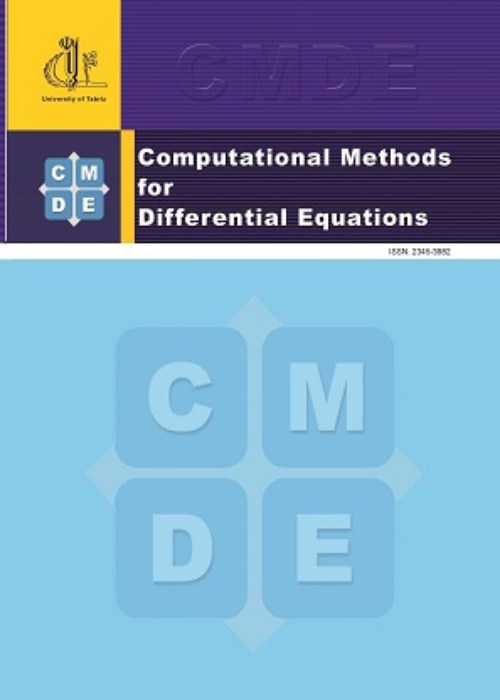فهرست مطالب
Computational Methods for Differential Equations
Volume:4 Issue: 4, Autumn 2016
- تاریخ انتشار: 1395/07/10
- تعداد عناوین: 6
-
-
Pages 261-275Some preliminaries about the integrable families of Riccati equations and solutions structure of these equations in several cases are presented in this paper, then by using of definitions for fractional derivative we apply the new extended of tanh method to the perturbed nonlinear fractional Schrodinger equation with the kerr law nonlinearity. Finally by using of this method and solutions of Riccati equations we obtain several analytical solutions for perturbed nonlinear fractional Schrodinger equation. The proposed technique enables a straightforward derivation of parameters of solitary solutions.Keywords: Riccati equations, tanh method, Analytical solution
-
Pages 276-284
In this article, we survey the asymptotic stability analysis of fractional differential systems with the Prabhakar fractional derivatives. We present the stability regions for these types of fractional differential systems. A brief comparison with the stability aspects of fractional differential systems in the sense of Riemann-Liouville fractional derivatives is also given.
Keywords: Asymptotically stable, Prabhakar fractional derivative, Generalized Mittag-Leffer function, Riemann-Liouville fractional derivative -
Pages 285-297In this paper, the existence and uniqueness of positive solutions for a class of nonlinear initial value problem for a finite fractional difference equation obtained by constructing the upper and lower control functions of nonlinear term without any monotone requirement .The solutions of fractional difference equation are the size of tumor in model tumor growth described by the Gompertz function. We use the method of upper and lower solutions and Schauder fixed point theorem to obtain the main results.Keywords: discrete fractional calculus, existence of solutions, Positive solution, Fixed point theorem
-
Pages 298-308This paper obtains the exact solutions of the wave equation as a second-order partial differential equation (PDE). We are going to calculate polynomial and non-polynomial exact solutions by using Lie point symmetry. We demonstrate the generation of such polynomial through the medium of the group theoretical properties of the equation. A generalized procedure for polynomial solution is presented and this extended to the construction of related polynomials.Keywords: Wave equation, Symmetry, Similarity solution
-
Pages 309-322In this paper, a numerical efficient method is proposed for the solution of time fractional mobile/immobile equation. The fractional derivative of equation is described in the Caputo sense. The proposed method is based on a finite difference scheme in time and Legendre spectral method in space. In this approach the time fractional derivative of mentioned equation is approximated by a scheme of order O(τ2−γ) for 0 < γ < 1. Also, we introduce the Legendre and shifted Legendre polynomials for full discretization. The aim of this paper is to show that the spectral method based on the egendre polynomial is also suitable for the treatment of the fractional partial differential equations. Numerical examples confirm the high accuracy of proposed scheme.Keywords: Time fractional, mobile, immobile (MIM) equation, finite difierence, spectral method, Legendre collocation method
-
Pages 323-334In the present paper, a numerical method is considered for solving one-dimensional heat equation subject to both Neumann and Dirichlet initial boundary conditions. This method is a combination of collocation method and radial basis functions (RBFs). The operational matrix of derivative for Laguerre-Gaussians (LG) radial basis functions is used to reduce the problem to a set of algebraic equations. The results of numerical experiments are presented to confirm the validity and applicability of the presented scheme.Keywords: Radial basis functions, Heat conduction, Dirichlet, Neumann boundary Conditions


